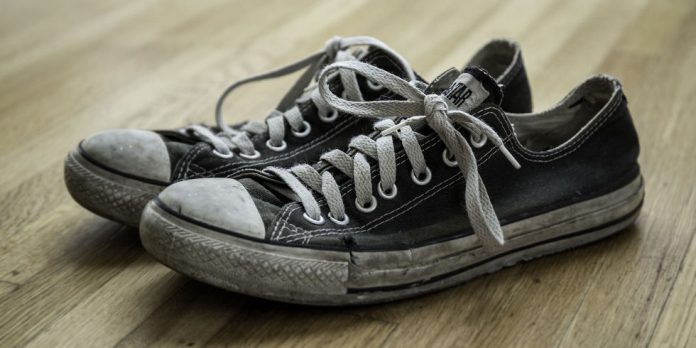https://www.seattletimes.com/life/outdoors/how-to-tell-its-time-to-throw-out-your-shoes/
“The shoe wears out in the area where we overload it, so the part where you need the most support isn’t there,” said Minneapolis podiatrist Paul Langer, clinical professor at the University of Minnesota. “A worn shoe can exaggerate the biomechanical faults you already have.”
A loss of support and cushioning can cause shin splints, Achilles tendinitis, knee pain and plantar fasciitis, a common form of heel pain. As a shoe’s sole and heel wear down unevenly, the likelihood of twisting an ankle increases. In severe cases, old shoes can cause stress fractures, Langer said.
As a general rule, the life of a running shoe is 300 to 500 miles, Langer said, though it varies with your body weight, gait and surface on which you run. Following that rule, someone who runs 4 miles, four times a week should consider replacing shoes after about 6 months, while a more casual athlete could wait a year. Running shoes typically can’t be repaired.
One way to check if running shoes need to be replaced is to look at the midsole, which is the foam part of the shoe between the outer sole (the bottom of the shoe, where the treads are) and the upper (the top of the shoe, where the laces are). When it starts to wrinkle deeply, the shoe is losing its cushioning and getting worn out. The midsole warps with heat, sun exposure and moisture, so if you run somewhere damp, it breaks down faster.
Whether repairing is worth the cost depends on how much you paid for the shoes in the first place, as high-quality leather resoling runs $35 to $45.
Analysis: This article informs you on when you should be changing out you athletic/workout shoes. It shows that running shoe soles wear down quickly and could be losing support as early as 300 miles in them. It also outlines how running shoes usually cannot be repaired after great use.




